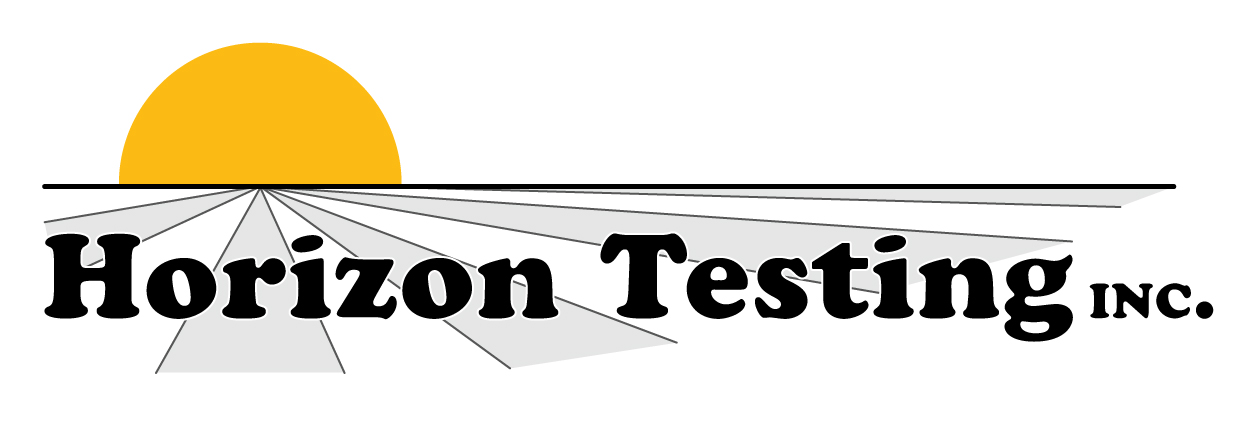apI 653 TANK INSPECTION
Horizon Testing is pleased to offer a full above-ground storage API 653 tank inspection, with consultation services. Our trained and knowledgeable API inspectors and technicians are available to perform both internal and external visual inspection, in addition to various non-destructive testing inspections, to fully assess the integrity of above ground storage tanks.
Technologies and CAPABILITIES
To provide the most valuable information to our customers, Horizon Testing Inc. has the following inspection technologies and capabilities:
ScanTech tank crawler system
Tank settlement surveys
Silverwing magnetic flux leakage floor scanner
GE phased array corrosion mapping with PATH scanner technology
Conventional ultrasonic thickness inspection
Magnetic particle and liquid penetrant inspections
Vacuum Box testing
TANK CRAWLER SCANNER
The ScanTech tank crawler is a computer controlled automated ultrasonic system, which has the capability to acquire distance encoded thickness measurements with a scanning resolution as low as 0.250” intervals. The thickness measurement information can be easily viewed with a ‘B’ scan presentation, and conventional Excel spread sheet, which can provide low, average, and high thickness measurements that can then be used to assess the tank shell condition. The system is used to scan from both the internal and external surfaces of the tank, up and around the tank shell wall, to a maximum height of 100’.
TANK SETTLEMENT SURVEYS
Tank settlement can be characterized as uniform, tilt planar, out-of-plane, or edge settlement. When the settlement is beyond the standard limits, as per API 653, repair will be recommended. Settlement survey points are taken at several locations, as detailed in API 653 Standard Practice.
The Silverwing Floormat 3D is the latest generation MFL floor mapping system for the inspection of above ground storage tank floors. The system takes advantage of the latest developments in magnet design and STARS technology to provide enhanced above ground storage tank defect detection and sizing performance. It has the ability to discriminate between top side and bottom side corrosion. The system is a computer-controlled inspection platform that generates a defect location map and provides percentages of wall thickness loss.
PHASED ARRAY TECHNOLOGY
The Phased Array Ultrasonic Corrosion Mapping Inspection system, using the distance encoded PATH Scanner, is an effective testing tool that determines the remaining thickness of the material being tested. The system is capable of providing a ‘C’ scan image, and thickness data in the form of a CVS file that can be easily converted into an Excel format. ‘B’ scans can then be easily saved into a report. Horizon Testing Inc. uses this technology for floor scan verification, as well as corrosion mapping.
The use of this technology is not limited to tank inspection but can also be used to detect the presence of internal corrosion in piping and pressure vessels.
ULTRASONIC THICKNESS SURVEYS
Conventional Ultrasonic Thickness (UT) measurements are a useful method of determining the thickness of tank shell, floor, roof, and nozzle material. UT surveys are performed in accordance with ASME V and API 653. The client may choose to expand their inspection needs where further evaluation may be required.
NON-DESTRUCTIVE TESTING
Traditional non-destructive testing methods such as Magnetic Particle (MP) and Liquid Penetrant (LP) inspections are efficient inspection methods used to determine the integrity of storage tank welds, attachments, and any other areas of concern.
VISUAL INSPECTION
Often, a good visual inspection can provide excellent information about a tank’s condition and areas that do, or will, require further assessment. Internal and external visual inspections are performed in accordance with API 653 checklist standard procedure.
VACUUM BOX TESTING
Silverwing Vacuum Boxes are used to test for potential leaks on floor plate welds (flat box), and potential leaks in the shell to bottom circumferential weld (angle box). The vacuum box testing process is a quick method for testing and locating areas of concern.
For additional information please contact us.

